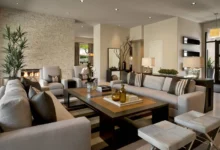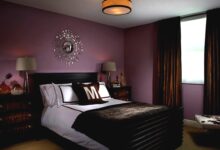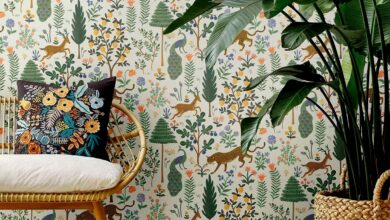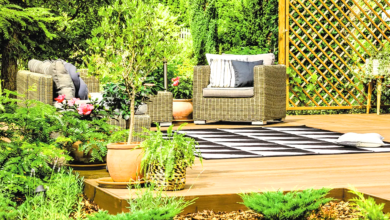Modern Living Room Ideas to Transform Your Space
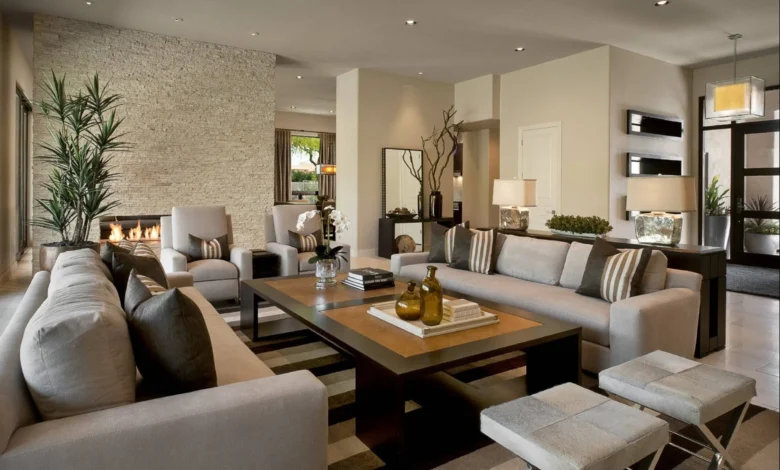
Creating the perfect modern living room is more than just choosing stylish furniture – it’s about crafting a space that seamlessly blends contemporary aesthetics with everyday functionality. Today’s homeowners are seeking living room design ideas that reflect their personal style while embracing the latest trends in interior design. Whether you’re working with a spacious open-plan layout or a compact urban apartment, the right modern living room ideas can completely transform your space into a sophisticated haven.
The evolution of modern living room design has shifted toward creating environments that prioritize both comfort and visual appeal. In the interior design trends of 2025, comfort is king. Plush sofas, oversized cushions, and cozy blankets will uplift and mark inviting spaces where people can relax and unwind. This approach recognizes that our living rooms serve as multifunctional spaces where we entertain guests, work from home, and spend quality time with family.
From sleek minimalist living room concepts to bold maximalist statements, modern design offers endless possibilities for personalization. The key lies in understanding how to balance clean lines with warm textures, neutral color palettes with strategic pops of color, and functional furniture with decorative elements. In 2025, ELLE DECOR A-List designer Tiffany Howell predicts an uptick in “organic modernism such as mixed metals paired with natural woods.”
This comprehensive guide will explore the most impactful contemporary living room strategies, from selecting the perfect color schemes to arranging furniture for optimal flow. You’ll discover how to incorporate current trends while creating a timeless space that reflects your unique lifestyle. Whether you’re embarking on a complete renovation or simply looking to refresh your existing decor, these modern living room ideas will provide the inspiration and practical guidance needed to transform your space into a stunning contemporary retreat.
Modern Color Schemes That Make a Statement
The foundation of any exceptional modern living room design begins with selecting the right color palette. Contemporary color schemes have evolved far beyond the traditional black and white combinations, embracing warmer neutrals, earth tones, and strategic accent colors that create depth and visual interest.
Neutral color palettes remain the cornerstone of modern design, but today’s approach is more nuanced and sophisticated. Warm whites, creamy beiges, and soft grays create a calming backdrop that allows furniture and accessories to shine. These living room color ideas work particularly well in smaller spaces, as they reflect light and create an illusion of spaciousness. Consider pairing warm white walls with natural wood accents and touches of black for a classic modern look that never goes out of style.
Earth tones are experiencing a significant resurgence in contemporary living room design. Rich terracotta, deep olive green, and warm ochre create a grounding effect that makes spaces feel more intimate and welcoming. These colors work beautifully as accent walls or can be incorporated through textiles, artwork, and decorative accessories. The key is to balance these deeper tones with lighter neutrals to prevent the space from feeling overwhelming.
Bold accent colors are making their mark in modern living rooms, but the approach is more strategic than ever. Instead of painting entire walls in bright colors, designers are recommending the “60-30-10 rule” – 60% neutral base, 30% secondary color, and 10% bold accent. This might translate to neutral walls and large furniture pieces, medium-toned curtains or rugs, and vibrant throw pillows or artwork as the accent elements.
Monochromatic color schemes are particularly effective in modern living room settings, creating a sophisticated and cohesive look. This doesn’t mean everything should be the same color, but rather exploring different shades, tones, and textures within the same color family. For example, a blue-based monochromatic scheme might include navy blue seating, powder blue walls, and steel blue decorative elements, all unified by varying textures and finishes.
Contemporary Furniture Selection and Arrangement
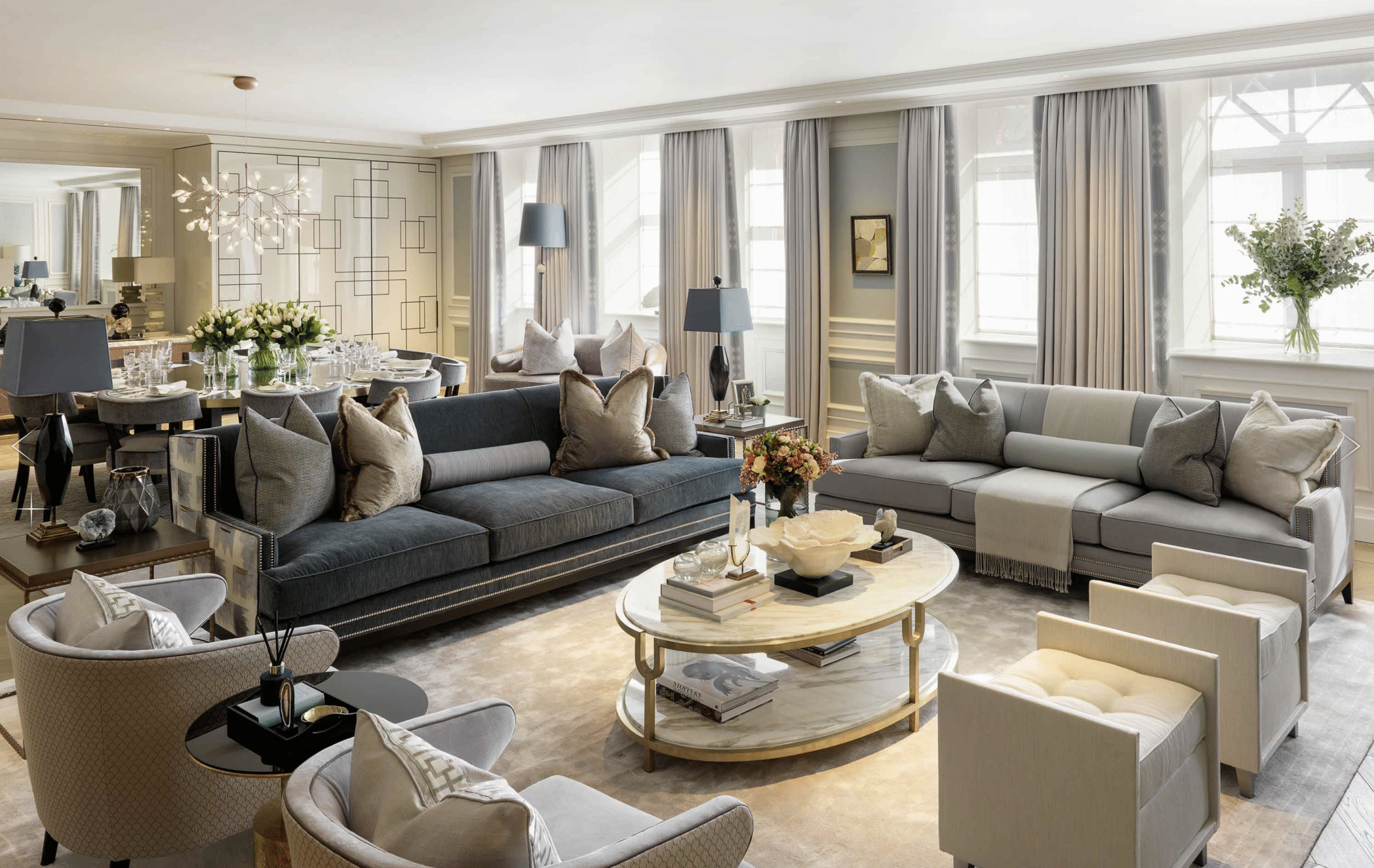
The furniture you choose and how you arrange it can make or break your modern living room design. Contemporary furniture is characterized by clean lines, minimal ornamentation, and multifunctional capabilities that align with today’s lifestyle needs.
Modern living room furniture prioritizes both form and function, with pieces that serve multiple purposes becoming increasingly popular. Storage ottomans that double as coffee tables, sectional sofas with built-in USB ports, and media consoles with hidden cable management systems exemplify this trend. When selecting furniture, consider pieces with simple geometric shapes and avoid overly ornate details that can make a space feel cluttered.
Seating arrangement is crucial in creating a functional and inviting contemporary living room. The traditional approach of pushing all furniture against the walls is being replaced by more intimate conversation areas. Float your sofa in the center of the room, creating defined zones for different activities. Add a pair of accent chairs positioned at angles to encourage conversation, and ensure there’s adequate lighting for each seating area.
The coffee table serves as both a functional surface and a design focal point in modern living room layouts. Consider the scale carefully – it should be proportional to your seating area and positioned about 14-18 inches from the sofa for optimal comfort. Glass coffee tables maintain visual lightness in smaller spaces, while natural wood or stone options add warmth and texture to more spacious rooms.
Storage solutions in modern living rooms must be both practical and aesthetically pleasing. Built-in shelving units, sleek media consoles, and hidden storage compartments help maintain the clean lines that define contemporary design. Consider furniture with legs that lift pieces off the floor, creating a sense of airiness and making spaces appear larger.
Scale and proportion are fundamental principles in modern living room furniture arrangement. Avoid the common mistake of choosing furniture that’s too small for the space – it’s better to have fewer, properly sized pieces than many small items that make the room feel fragmented. Use area rugs to define seating areas and ensure they’re large enough for all front furniture legs to rest on them.
Lighting Design for Modern Living Spaces
Lighting plays a transformative role in any modern living room, serving both functional and aesthetic purposes. A well-designed lighting scheme combines multiple sources to create ambiance, highlight architectural features, and provide task-specific illumination throughout the day.
Layered lighting is essential in contemporary living room design, incorporating ambient, task, and accent lighting to create a dynamic and flexible environment. Ambient lighting provides overall illumination and can be achieved through ceiling-mounted fixtures, recessed lighting, or large pendant lights. Task lighting focuses on specific activities like reading or working, while accent lighting highlights artwork, architectural features, or decorative elements.
Modern living room lighting fixtures are increasingly becoming statement pieces in their own right. Sculptural pendant lights, geometric table lamps, and linear LED strips create visual interest while providing necessary illumination. Consider the scale of your lighting fixtures carefully – a small chandelier in a large room will appear insignificant, while an oversized fixture can overwhelm a compact space.
Natural light remains one of the most important elements in modern design. Maximize daylight by choosing window treatments that can be fully opened during the day. Sheer curtains, motorized blinds, or sleek roller shades allow for privacy when needed while maintaining the clean lines essential to contemporary aesthetics. Position mirrors strategically to reflect and amplify natural light throughout the space.
Smart lighting technology is becoming increasingly integrated into modern living room design. Programmable LED systems allow you to adjust color temperature and brightness throughout the day, creating different moods for various activities. Dimmer switches are essential for creating the right ambiance for entertaining, while bright task lighting supports work or reading activities.
Floor and table lamps provide flexibility in contemporary living room lighting schemes. Choose pieces that complement your overall design aesthetic – sleek metal finishes for industrial-inspired spaces, natural wood for Scandinavian influences, or bold sculptural forms for more dramatic interiors. Position lamps to eliminate dark corners and create pools of warm light that make the space feel more inviting.
Texture and Material Integration
The successful integration of various textures and materials is what elevates a modern living room from simply contemporary to truly exceptional. This layering creates visual depth, tactile interest, and a sense of sophistication that defines the best contemporary interiors.
Natural materials are experiencing a renaissance in modern living room design, with wood, stone, and metal taking center stage. Mixed metals paired with natural woods are particularly popular, creating a balance between industrial and organic elements. Consider incorporating reclaimed wood coffee tables, natural stone accent walls, or brushed metal light fixtures to add authenticity and warmth to your space.
Fabric selection plays a crucial role in defining the comfort level and visual appeal of your contemporary living room. Mix different textile weights and weaves to create interest – pair a smooth leather sofa with nubby throw pillows, or combine linen curtains with a plush wool area rug. The key is maintaining a cohesive color palette while varying the textures to prevent the space from appearing flat or monotonous.
Modern living room design embraces the concept of “imperfect” textures that add character and visual interest. Raw concrete walls, exposed brick, weathered wood beams, and hand-woven textiles introduce an organic quality that softens the sometimes stark nature of contemporary design. These elements create focal points and conversation starters while maintaining the overall modern aesthetic.
Layering rugs has become a popular technique in contemporary interiors, adding depth and defining different areas within an open-plan modern living room. Start with a large neutral base rug and layer a smaller patterned or textured rug on top. This approach allows for more flexibility in design changes and creates visual zones within larger spaces.
The integration of technology and natural materials represents a growing trend in modern living room design. Hidden speakers within wooden furniture, charging stations integrated into natural stone side tables, and smart home controls disguised within organic textures demonstrate how contemporary living seamlessly blends convenience with aesthetic appeal.
Maximizing Small Modern Living Rooms
Creating an impressive modern living room in a limited space requires strategic planning and clever design solutions. Small spaces can be just as stylish and functional as larger rooms when approached with the right techniques and furniture choices.
Small living room ideas should focus on maximizing both visual and actual space through smart furniture selection and strategic placement. Choose furniture with exposed legs to create a sense of airiness, opt for glass or acrylic accent pieces that don’t block sightlines, and select neutral color palettes that reflect light and make the space feel larger.
Vertical space utilization is crucial in compact modern living room designs. Floor-to-ceiling shelving units draw the eye upward and provide essential storage without consuming valuable floor space. Wall-mounted TVs, floating shelves, and hanging plants free up surface area while maintaining the clean lines characteristic of contemporary design.
Multi-functional furniture is essential in small contemporary living room layouts. Storage ottomans serve as seating, coffee tables, and hidden storage solutions. Nesting tables can be separated when needed or tucked away to save space. Sectional sofas with built-in storage compartments maximize seating while providing practical solutions for everyday items.
Mirror placement strategically expands the visual boundaries of small modern living rooms. Large mirrors positioned opposite windows reflect natural light and outdoor views, creating the illusion of additional space. Mirrored furniture pieces, such as side tables or cabinet fronts, contribute to this effect while maintaining functionality.
The concept of “floating” furniture works particularly well in small spaces. Instead of pushing everything against the walls, create intimate seating areas by positioning furniture slightly away from the perimeter. This counterintuitive approach actually makes rooms feel more spacious by creating clear pathways and defined zones within the limited square footage.
Creating Focal Points and Statement Pieces
Every exceptional modern living room needs compelling focal points that draw attention and create visual hierarchy within the space. These elements serve as anchors for the overall design while reflecting your personal style and design preferences.
Artwork selection and placement can dramatically impact the success of your contemporary living room design. Large-scale pieces create immediate impact and work particularly well above sofas or on prominent walls. Consider the scale carefully – artwork should be proportional to both the furniture and the wall space. Gallery walls offer flexibility and personal expression but require careful planning to maintain the clean aesthetic of modern design.
Modern living room feature walls have evolved beyond simple accent paint colors. Textured wallpapers, natural wood planking, exposed brick, or geometric tile patterns create dramatic backdrops without overwhelming the space. The key is choosing materials and patterns that complement rather than compete with your furniture and accessories.
Statement furniture pieces can serve as functional focal points in modern living room designs. A sculptural coffee table, an oversized pendant light, or a uniquely shaped accent chair becomes both a practical element and an artistic statement. When investing in statement pieces, choose items that reflect your personal style and will remain appealing over time.
Architectural features, when present, should be highlighted rather than hidden in contemporary design. Exposed beams, interesting window shapes, built-in fireplaces, or unique ceiling treatments can become natural focal points that define the character of your modern living room. Work with these features by choosing complementary furnishings and lighting that enhance their impact.
Technology integration is increasingly becoming a design consideration in contemporary living room layouts. Wall-mounted TVs can be treated as artistic elements when not in use by displaying artwork or family photos. Gaming systems, sound equipment, and smart home controls should be seamlessly integrated to maintain the clean aesthetic while providing modern convenience.
Incorporating Plants and Natural Elements
The biophilic design trend continues to gain momentum in modern living room interiors, recognizing the psychological and aesthetic benefits of incorporating natural elements into contemporary spaces. Plants and organic materials create a vital connection to nature while softening the sometimes stark lines of modern design.
Plant selection for modern living rooms should consider both aesthetic impact and maintenance requirements. Large statement plants like fiddle leaf figs, monstera deliciosa, or bird of paradise create dramatic vertical elements and work well in corners or beside large furniture pieces. Smaller plants can be grouped on shelves, coffee tables, or plant stands to create layered compositions.
Contemporary living room plant displays have moved beyond traditional potting approaches. Hanging planters, wall-mounted systems, and integrated planters within furniture pieces offer innovative ways to incorporate greenery. Consider the lighting requirements of your chosen plants and position them accordingly, or invest in grow lights that double as decorative fixtures.
Natural wood elements bring warmth and texture to modern living room designs while maintaining contemporary aesthetics. Live-edge coffee tables, reclaimed wood accent walls, or wooden beam ceilings create organic focal points that complement rather than compete with modern furnishings. The key is balancing these elements with sleeker materials like metal and glass.
Stone and mineral accents add grounding elements to contemporary spaces. Natural stone coffee tables, marble side tables, or decorative mineral specimens create interesting textural contrasts while maintaining the sophisticated aesthetic of modern living room design. These elements work particularly well in neutral color schemes where their natural variations provide visual interest.
Water features, while less common in living rooms, can create dramatic focal points in contemporary living room settings. Small tabletop fountains, wall-mounted water elements, or even aquariums designed as furniture pieces introduce soothing sounds and movement while maintaining modern aesthetics. Consider the maintenance requirements and ensure these features complement rather than dominate your overall design.
Technology Integration in Modern Living Rooms
The seamless integration of technology has become a defining characteristic of modern living room design, requiring careful planning to maintain aesthetic appeal while providing contemporary convenience. Today’s approach emphasizes hiding or disguising technology rather than making it a prominent feature.
Entertainment systems in contemporary living room layouts should be both functional and visually appealing. Wall-mounted TVs eliminate the need for bulky entertainment centers, while built-in media consoles provide storage for equipment without visual clutter. Consider TV lift mechanisms that allow screens to disappear when not in use, maintaining the clean lines essential to modern design.
Cable management has become an art form in modern living room design. Hidden cable systems, wireless technologies, and furniture with integrated wire management keep spaces looking clean and organized. Invest in quality wireless speakers, streaming devices, and charging stations that reduce the need for visible cords and cables.
Smart home integration should be subtle and user-friendly in modern living rooms. Programmable lighting systems, automated window treatments, and voice-controlled devices enhance convenience without compromising aesthetics. Choose devices with sleek designs that complement your overall decor, or select options that can be hidden or camouflaged within existing furnishings.
Gaming and work-from-home setups require special consideration in contemporary living room designs. Dual-purpose furniture that can quickly transform from entertainment areas to productive workspaces maintains flexibility while supporting modern lifestyles. Consider desks that fold into walls, gaming chairs that complement your seating arrangement, and storage solutions for equipment that isn’t in constant use.
Charging stations and device storage have become necessary components of modern living room furniture. Side tables with built-in USB ports, storage ottomans with charging capabilities, and media consoles with dedicated device storage keep technology organized and accessible. Plan these elements during the initial design phase to ensure they integrate seamlessly with your overall aesthetic.
Budget-Friendly Modern Living Room Updates
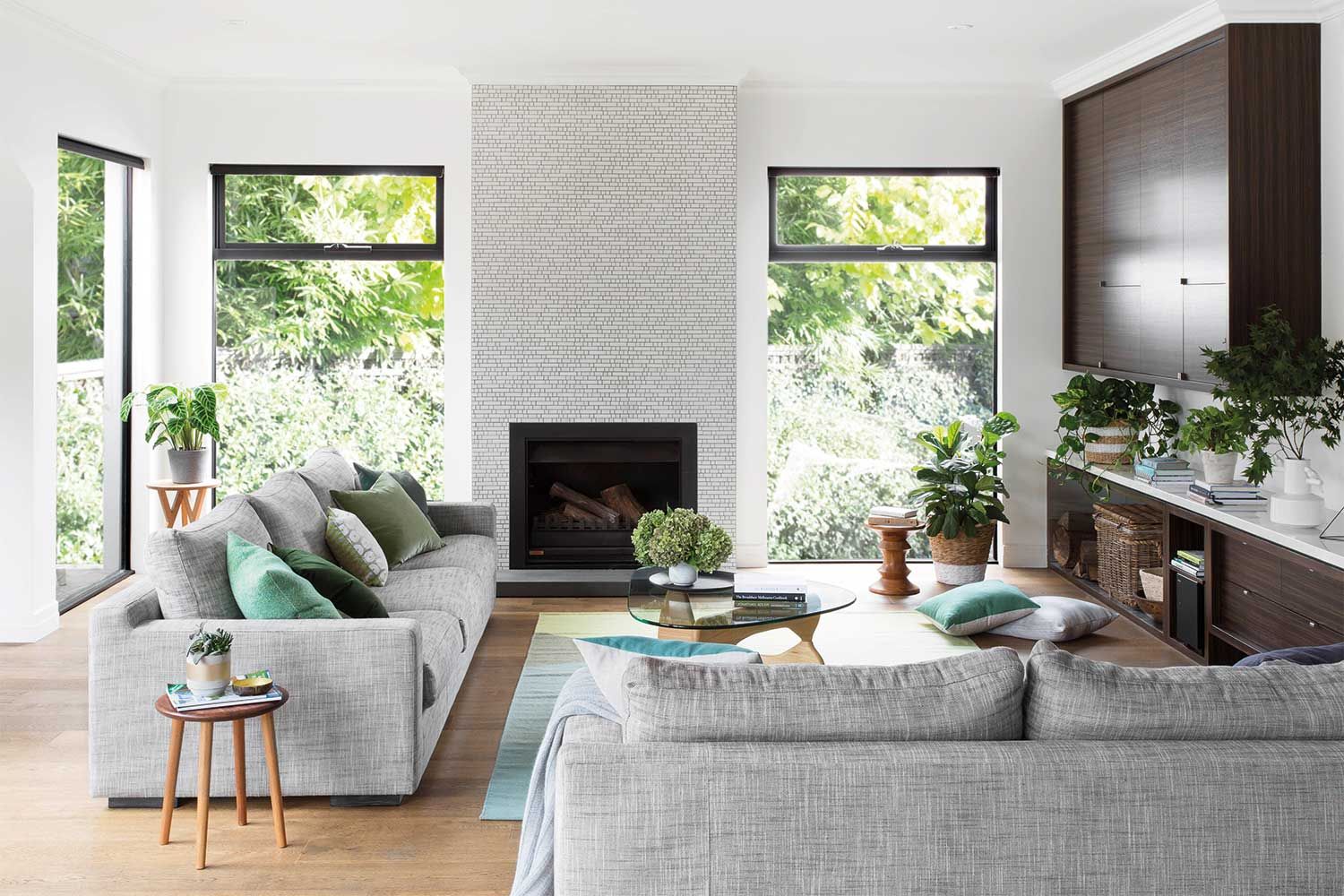
Creating a stunning modern living room doesn’t require a complete renovation or unlimited budget. Strategic updates and clever shopping can transform your existing space while maintaining contemporary style and functionality.
Affordable living room ideas often center around textiles and accessories that provide maximum visual impact for minimal investment. New throw pillows in modern geometric patterns, contemporary area rugs, and updated window treatments can completely refresh a space without major expenditure. Focus on quality pieces that will withstand regular use while providing the aesthetic impact you desire.
DIY projects can add custom elements to your modern living room while keeping costs manageable. Simple floating shelves, painted accent walls, or recovered furniture pieces can create high-end looks at a fraction of professional costs. Focus on projects that align with your skill level and available time, and don’t hesitate to invest in quality materials for long-lasting results.
Budget modern living room transformations often involve strategic furniture rearrangement rather than new purchases. Experiment with different layouts, create new conversation areas, and repurpose existing pieces for different functions. Sometimes a fresh perspective on your current furnishings can create the contemporary look you’re seeking.
Lighting updates provide dramatic impact in contemporary living room makeovers. New lampshades, updated light fixtures, or additional lighting sources can completely change the ambiance of your space. Consider LED bulbs with different color temperatures to create various moods throughout the day, and invest in dimmer switches for added flexibility.
Shopping strategies for modern living room furniture should focus on timeless pieces that won’t quickly go out of style. Invest in quality basics like a well-made sofa in a neutral color, then add personality through accessories and accent pieces that can be easily updated as trends change. Consider second-hand or vintage pieces that can be updated with new upholstery or hardware for a custom look at reduced cost.
Seasonal Decor and Flexibility
Modern living room design should be flexible enough to accommodate seasonal changes and evolving lifestyle needs. Creating a foundation that can be easily updated keeps your space feeling fresh and current throughout the year.
Seasonal textile changes provide the easiest way to update your contemporary living room for different times of year. Lightweight linens and cotton fabrics work well for spring and summer, while wool throws and velvet pillows add warmth and texture for fall and winter. Choose a consistent color palette that works across seasons, then vary the textures and weights to create seasonal interest.
Modern living room decor should include some flexible elements that can be easily changed or rearranged. Modular furniture pieces, moveable lighting, and interchangeable artwork allow you to refresh your space regularly without major investment. Consider furniture on casters or lightweight pieces that can be easily repositioned for different activities or seasonal preferences.
Holiday decorating in modern living rooms requires a subtle approach that maintains contemporary aesthetics. Choose decorations with clean lines and sophisticated color schemes that complement your existing decor. Natural elements like branches, pinecones, or seasonal flowers can provide festive touches without overwhelming the space.
Storage solutions for seasonal items should be considered in your contemporary living room design. Built-in storage, decorative baskets, or furniture with hidden compartments can house seasonal decorations, throw blankets, and other items that aren’t needed year-round. This approach keeps your space organized while maintaining the clean lines essential to modern design.
Adaptability for different activities makes modern living rooms more functional and enjoyable throughout the year. Furniture that can be easily rearranged for entertaining, comfortable seating for cozy winter evenings, and adequate lighting for various tasks ensure your space works well regardless of the season or occasion.
More Read: Living Room Decor Ideas That Wow Guests
Conclusion
Creating the perfect modern living room is an exciting journey that combines contemporary aesthetics with personal style and practical functionality. From selecting the right color schemes and furniture arrangements to integrating technology and natural elements, every decision contributes to a space that reflects today’s lifestyle while remaining timeless and sophisticated.
The key to success lies in balancing clean, modern lines with warm textures, neutral palettes with strategic pops of color, and functional furniture with beautiful design elements. Whether working with a generous budget or making strategic updates over time, the principles of modern living room design can be adapted to any space and situation.
By focusing on quality over quantity, embracing both comfort and style, and creating flexible spaces that can evolve with your needs, you’ll develop a contemporary living room that serves as both a personal sanctuary and an impressive space for entertaining. Remember that the best modern living rooms are those that feel authentically you while embracing the sophisticated simplicity that defines contemporary design – creating spaces where modern living truly comes to life.
